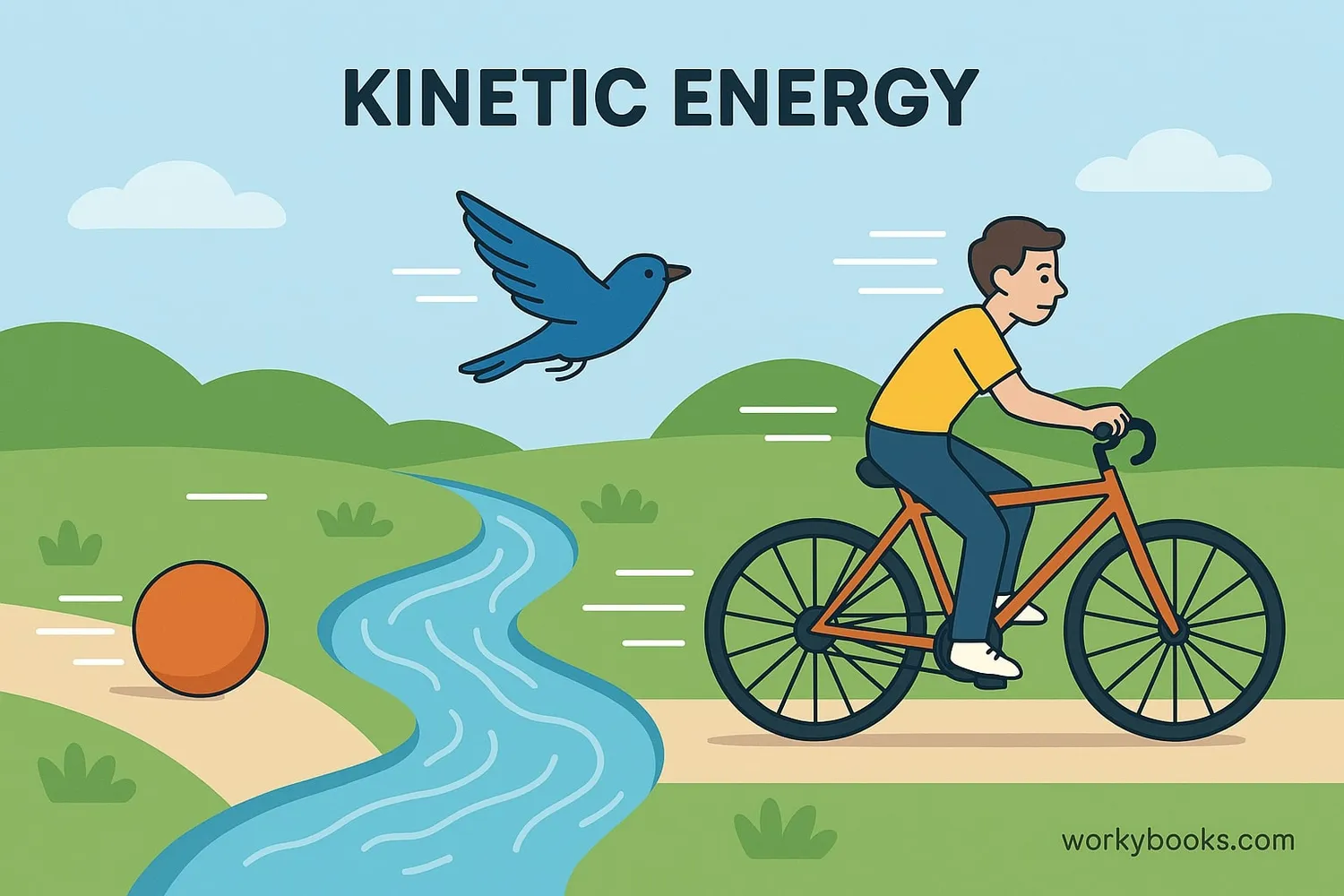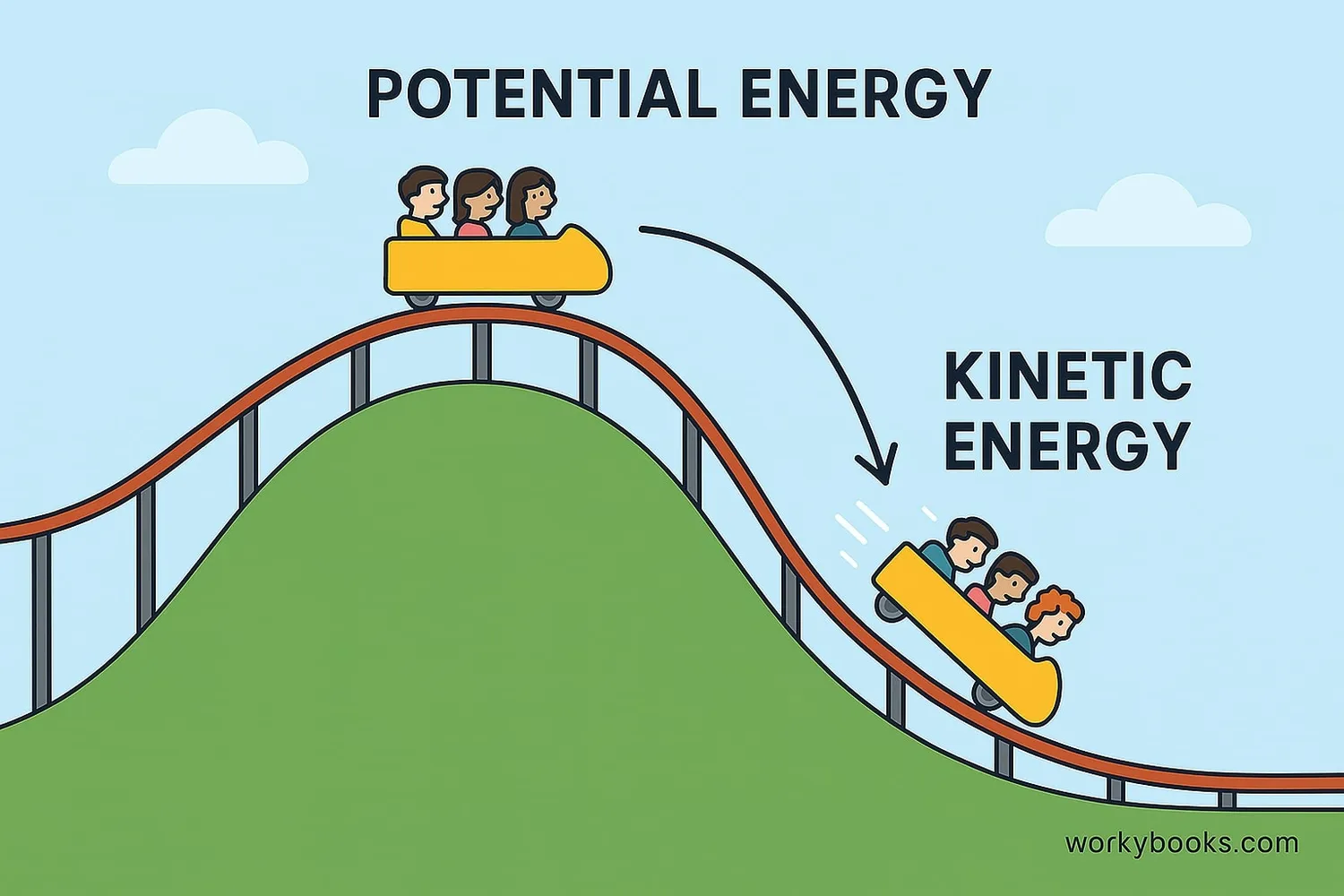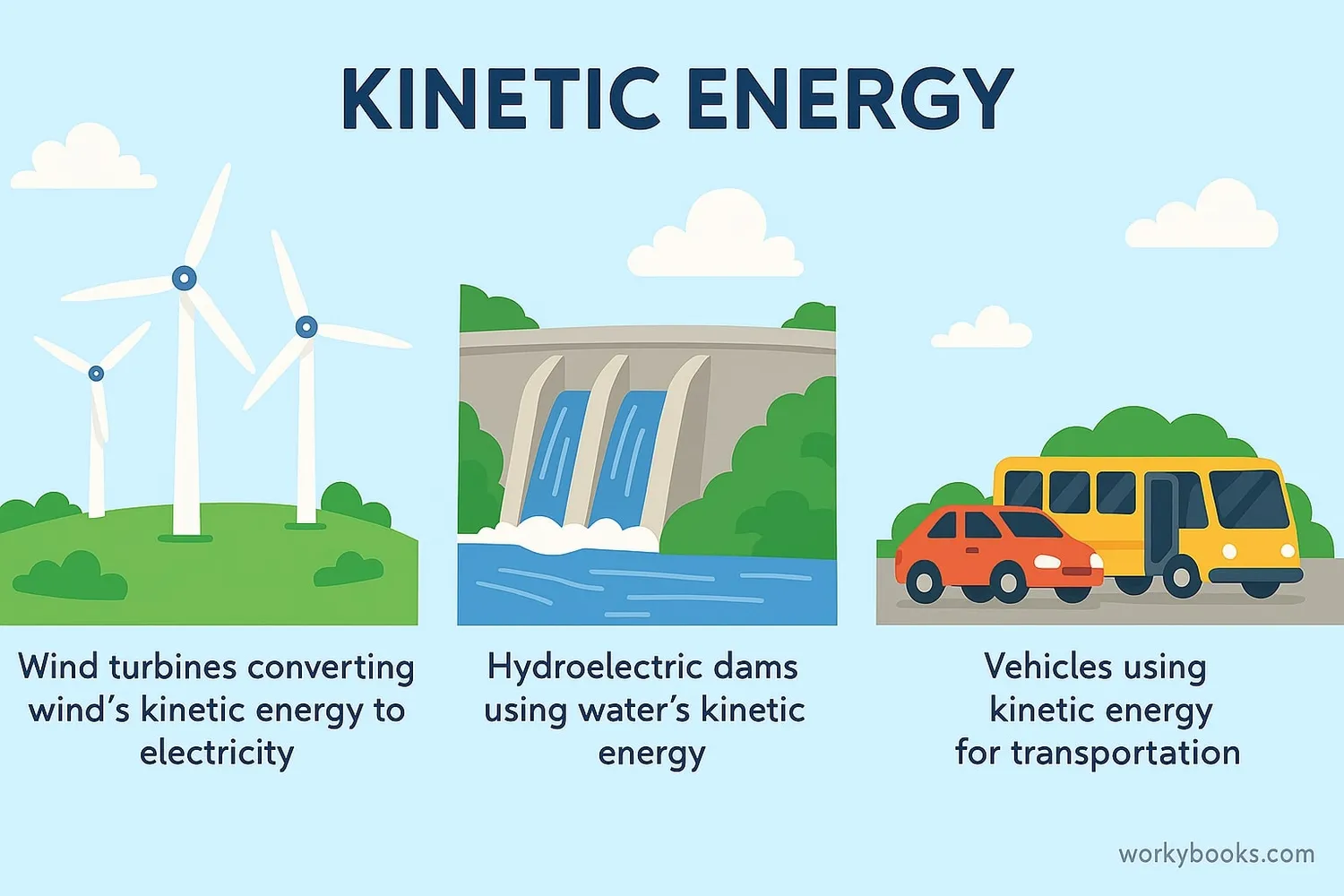Kinetic Energy - Definition, Examples, Quiz, FAQ, Trivia
Discover how moving objects store and transfer energy
What is Kinetic Energy?

Kinetic energy is the energy of motion! Any object that is moving has kinetic energy. The word "kinetic" comes from the Greek word "kinesis," which means motion. When you see a ball rolling, a bird flying, or water flowing, you're seeing kinetic energy in action.
Think of kinetic energy as the energy an object has because it's moving. The faster something moves, the more kinetic energy it has. Also, heavier objects have more kinetic energy than lighter ones moving at the same speed. Kinetic energy is a scalar quantity, which means it has magnitude (amount) but no direction.
Energy Fact!
Even very slow-moving objects have kinetic energy. A snail crawling at 0.03 mph has kinetic energy, just a very small amount!
How Kinetic Energy Works

Kinetic energy comes from the movement of objects, but it often starts as another form of energy. Here's how it works:
Energy Transformation
Other energy forms transform into kinetic energy
Work Energy Theorem
Work done on an object changes its kinetic energy
Velocity Matters
Doubling speed quadruples kinetic energy
Types of Motion
Translational, rotational, and vibrational kinetic energy
Transfer
Kinetic energy can transfer between objects
The most common transformation is from potential energy to kinetic energy. Potential energy is stored energy. When you drop a ball, its gravitational potential energy transforms into kinetic energy as it falls. Similarly, a drawn bow has elastic potential energy that transforms into kinetic energy when the arrow is released.
According to the work-energy theorem, the work done on an object equals its change in kinetic energy. This means when you push something, you're transferring energy to it, which becomes kinetic energy if the object moves.
Speed Matters!
When you double an object's speed, its kinetic energy increases by four times! This is why high-speed collisions are so dangerous.
The Kinetic Energy Formula
Scientists use a special formula to calculate kinetic energy. The formula is:
Where:
• KE = Kinetic Energy (measured in Joules)
• m = Mass of the object (measured in kilograms)
• v = Velocity of the object (measured in meters per second)
This formula shows us two important things about kinetic energy:
1. Kinetic energy depends on the square of velocity. This means if you double the speed, the kinetic energy becomes four times greater!
2. Kinetic energy is directly proportional to mass. A heavier object moving at the same speed has more kinetic energy.
For example, a 2 kg ball moving at 3 m/s has kinetic energy of 0.5 × 2 × (3)2 = 9 Joules.
Units Matter!
Kinetic energy is measured in Joules (J), named after English physicist James Prescott Joule. One Joule is the energy needed to lift an apple one meter straight up!
Why Kinetic Energy is Important

Kinetic energy is essential to our everyday lives and the world around us. Here's why it's so important:
Renewable Energy
Wind and water kinetic energy generate electricity
Transportation
All vehicles rely on kinetic energy to move
Energy Transformation
Kinetic energy is a key step in energy chains
Understanding kinetic energy helps us:
• Design safer cars and roads
• Develop renewable energy sources like wind and hydro power
• Understand sports and athletic performance
• Comprehend how the universe works, from atoms to planets
Without kinetic energy, nothing would move! Planets wouldn't orbit stars, wind wouldn't blow, and we couldn't walk or run. Kinetic energy is fundamental to motion in our universe.
Kinetic Energy Quiz
Test your kinetic energy knowledge with this interactive quiz! Answer all 5 questions to see how much you've learned.
Frequently Asked Questions
Here are answers to some common questions about kinetic energy:
Fun Kinetic Energy Trivia
Discover some amazing facts about kinetic energy:
Space Impacts
A small meteorite (1 kg) entering Earth's atmosphere at 30 km/s has kinetic energy equivalent to 100 kg of TNT! This energy transforms into heat and light, creating the "shooting stars" we see.
Sports Science
A professional baseball pitcher can throw a ball with about 100 Joules of kinetic energy. When the batter hits a home run, they might add another 150 Joules, sending the ball flying!
Molecular Motion
At room temperature, air molecules move at about 500 meters per second (over 1,000 mph)! But they constantly collide, so they don't get far before changing direction.
Energy Transformation
When you rub your hands together, you convert kinetic energy into thermal energy (heat). This is why your hands warm up when you're cold!


